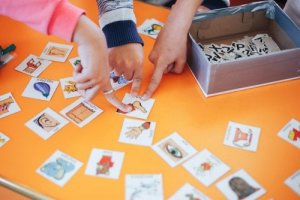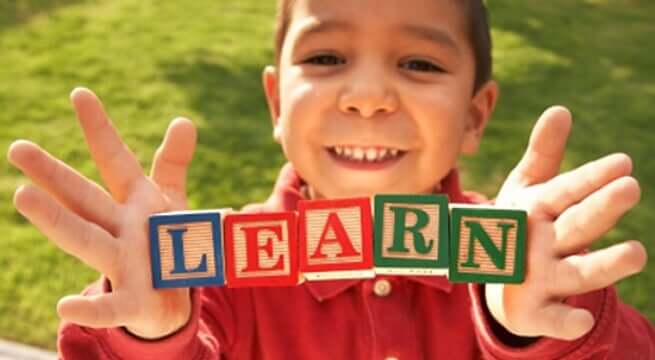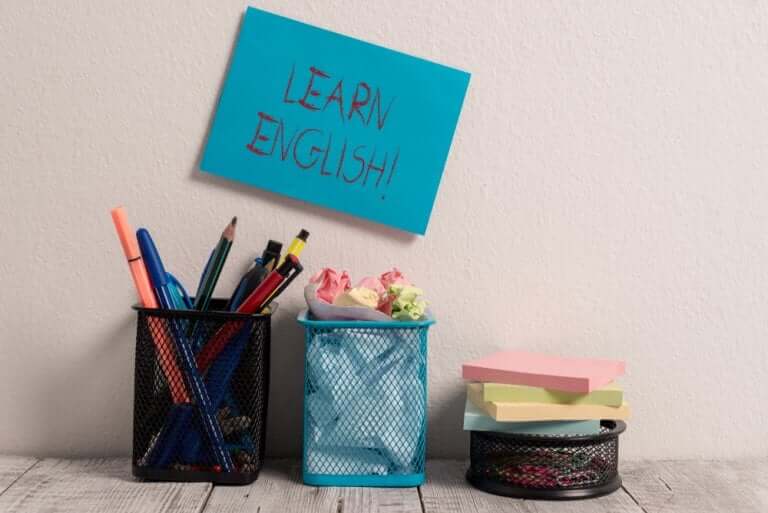Simple Tips to Teach Your Child Another Language

Becoming bilingual doesn’t have to be difficult. Although children are quite capable of easily learning several languages, we’re not really sure how to help them do it. However, learning to teach your child another language is actually quite simple if we follow certain steps.
Many people have the wrong idea that children can only become bilingual if they start speaking the two languages at the same time. However, this is just a myth.
Jill Stribling, a graduate in Psychology and Pedagogy and a Master’s in Early Childhood Education from the University of California, says the following: “It is a myth that a child cannot become bilingual after a certain age.”
She insists that any child can become bilingual.
“Bilingual children are more creative, their brains develop differently, and they have greater self-esteem.”
–Jill Stribling–
We’re going to give you some tips to teach your child another language easily and naturally.
Simple tips to teach your child another language
Listen to music
Exposing your child to music is one of the easiest ways to introduce him or her to a new language. As we know, children learn by interacting, listening, and watching. When we play music in another language, children become familiar with the sound and rhythm of that language.
Listening to music will help children get to know the tone, inflections, and nuances of the language they are learning.
Even if they don’t understand the songs at first, they’ll be developing essential skills for future communication. Listening to, and repeating, songs in another language will help your child to develop a natural relationship with that language.

Watch videos or series in another language
Getting your children to watch videos or TV shows in another language is one of the best ways for them to learn a new language. It’s important to find some good DVDs with children’s programs or series that you can watch with them.
Videos incorporate two ways of learning: watching and listening. Although music is a very good way of learning another language, videos can give your children a visual representation of the words they’re listening to.
Read stories
We know that reading to children is very beneficial for them. Reading books in a foreign language is just one more way of increasing the benefits of reading for our children. In doing so, they get used to the structure of the language.
Seeing individual words is very different from reading complete sentences. To start with, we should look for simple illustrated books that we can enjoy with the child. Bilingual books are also a great idea, since they can be read in another language and yet your child will still understand the story.
Working with flashcards to teach your child another language
Flasgcards are fun, interactive, and effective. You can buy these language cards or create your own. To teach your child another language little by little, start using these cards a few times a day right from when they’re a baby. Flashcards are a very good way of easily teaching your child another language.

Another method is to choose 10 to 15 words and repeat them quickly when the child wakes up, after a diaper change, at bath time, or at any other appropriate time. Going through these cards won’t take any longer than 30 seconds each time.
Another option is to stick the cards on the walls in different parts of the house. When you come across them with your child, you can show them the card with the word and repeat it several times.
Practice with other people
The final, and probably most important, step is to practice with other people. Children can learn a new language simply by talking with other people who speak that language. By having this interaction, they’ll learn to speak very quickly.
Consistency on our part is key here, and children can learn very quickly and effortlessly. So, let’s take advantage of our children’s early years to help them become bilingual!
Becoming bilingual doesn’t have to be difficult. Although children are quite capable of easily learning several languages, we’re not really sure how to help them do it. However, learning to teach your child another language is actually quite simple if we follow certain steps.
Many people have the wrong idea that children can only become bilingual if they start speaking the two languages at the same time. However, this is just a myth.
Jill Stribling, a graduate in Psychology and Pedagogy and a Master’s in Early Childhood Education from the University of California, says the following: “It is a myth that a child cannot become bilingual after a certain age.”
She insists that any child can become bilingual.
“Bilingual children are more creative, their brains develop differently, and they have greater self-esteem.”
–Jill Stribling–
We’re going to give you some tips to teach your child another language easily and naturally.
Simple tips to teach your child another language
Listen to music
Exposing your child to music is one of the easiest ways to introduce him or her to a new language. As we know, children learn by interacting, listening, and watching. When we play music in another language, children become familiar with the sound and rhythm of that language.
Listening to music will help children get to know the tone, inflections, and nuances of the language they are learning.
Even if they don’t understand the songs at first, they’ll be developing essential skills for future communication. Listening to, and repeating, songs in another language will help your child to develop a natural relationship with that language.

Watch videos or series in another language
Getting your children to watch videos or TV shows in another language is one of the best ways for them to learn a new language. It’s important to find some good DVDs with children’s programs or series that you can watch with them.
Videos incorporate two ways of learning: watching and listening. Although music is a very good way of learning another language, videos can give your children a visual representation of the words they’re listening to.
Read stories
We know that reading to children is very beneficial for them. Reading books in a foreign language is just one more way of increasing the benefits of reading for our children. In doing so, they get used to the structure of the language.
Seeing individual words is very different from reading complete sentences. To start with, we should look for simple illustrated books that we can enjoy with the child. Bilingual books are also a great idea, since they can be read in another language and yet your child will still understand the story.
Working with flashcards to teach your child another language
Flasgcards are fun, interactive, and effective. You can buy these language cards or create your own. To teach your child another language little by little, start using these cards a few times a day right from when they’re a baby. Flashcards are a very good way of easily teaching your child another language.

Another method is to choose 10 to 15 words and repeat them quickly when the child wakes up, after a diaper change, at bath time, or at any other appropriate time. Going through these cards won’t take any longer than 30 seconds each time.
Another option is to stick the cards on the walls in different parts of the house. When you come across them with your child, you can show them the card with the word and repeat it several times.
Practice with other people
The final, and probably most important, step is to practice with other people. Children can learn a new language simply by talking with other people who speak that language. By having this interaction, they’ll learn to speak very quickly.
Consistency on our part is key here, and children can learn very quickly and effortlessly. So, let’s take advantage of our children’s early years to help them become bilingual!
All cited sources were thoroughly reviewed by our team to ensure their quality, reliability, currency, and validity. The bibliography of this article was considered reliable and of academic or scientific accuracy.
- Holme, Randal. (2003). Carrying a baby in the back: Teaching with an awareness of the cultural construction of language. Languages for intercultural communication and education.
- Brown, H. D. (2000). Principles of language learning and teaching. Pearson.
This text is provided for informational purposes only and does not replace consultation with a professional. If in doubt, consult your specialist.








